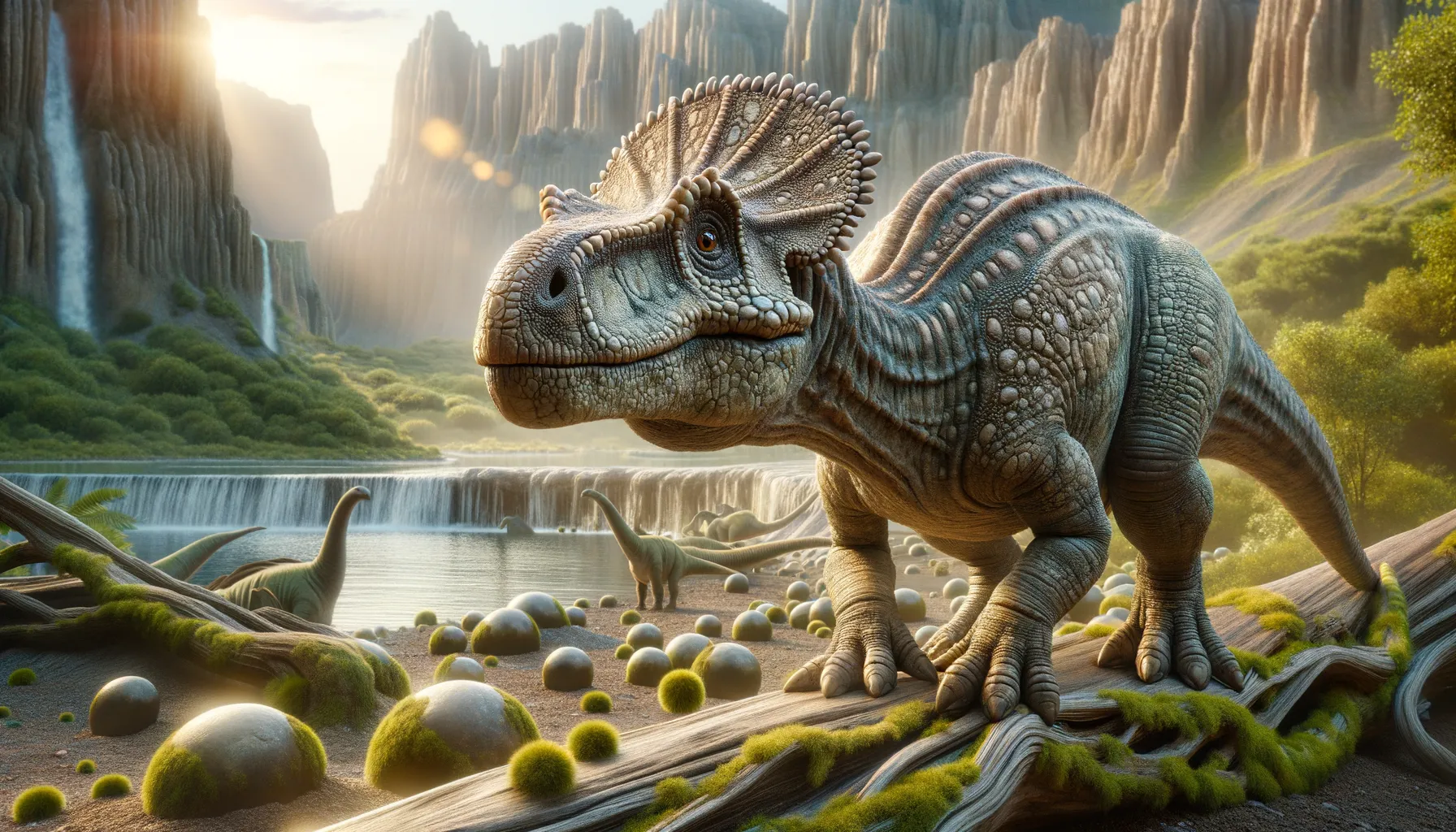
Colepiocephale
Headstrong survivor of the Late Cretaceous.
Period
Cretaceous
Length
About 2 to 3 meters in length.
Height
Roughly 1 meter tall at the hips.
Weight
Approximately 50 kilograms.
Colepiocephale was a small, herbivorous dinosaur known for its thick skull, which suggests it might have used its head for defense or combat with rivals. It belonged to the group of bone-headed dinosaurs known as pachycephalosaurs. Living during the Late Cretaceous period, this dinosaur roamed regions that are now part of North America. Its size made it a relatively small member of the dinosaur community.
Diet
Colepiocephale was herbivorous, feeding on a diet that primarily consisted of low-lying vegetation. This included leaves, fruits, and possibly soft twigs, using its small teeth to process the plant material.
Hunting
As a herbivore, Colepiocephale did not engage in hunting. It foraged for food in its environment, likely moving through underbrush to find suitable plants to eat.
Environmental challenges
This dinosaur lived in an environment that was transitioning climatically, with occasional fluctuations that affected plant availability. Predators were a constant threat, and its thick skull may have been a defense strategy against attackers. It could also have faced competition for resources from other herbivores in the area, necessitating adaptation to ensure survival.
Speed
Likely slow-moving due to its short stature.
Lifespan
Estimated to live around 20 to 30 years.
First discovery
Described first by Sternberg in 1945.
Fun Facts
- Colepiocephale was a dinosaur that lived during the Late Cretaceous period, around 80 million years ago.
- Its name means 'knucklehead', referring to its thick, dome-shaped skull, which was likely used for head-butting contests.
- Fossils of Colepiocephale have been found in what is now Alberta, Canada.
- It was a relatively small dinosaur, measuring about 6 to 8 feet long, roughly the size of a modern-day wolf.
- Colepiocephale was a herbivore, meaning it ate plants, possibly feasting on low-lying ferns and shrubs.
- This dinosaur belonged to a group called pachycephalosaurs, known for their distinctive thick skulls.
- The dome of its skull could have been used for defense or to establish dominance within its group.
Growth and Development
Young Colepiocephale dinosaurs likely grew at a steady rate, developing their characteristic thick skulls as they matured. Skeletal development was crucial, with their bone structure needing to adapt for both protection and foraging. Growth patterns might have varied based on environmental conditions and resource availability.
Habitat
Colepiocephale inhabited areas with dense vegetation, likely forested regions offering ample plant food. These environments provided shelter from predators and extreme weather. The terrain may have included both open areas and wooded sections, allowing for movement and foraging opportunities.
Interaction with other species
Colepiocephale probably lived in proximity to other herbivorous dinosaurs, competing for similar food sources. Interactions could include both cooperation in avoiding predators and competition for territory and resources. Its tough skull structure indicates it might have also engaged in head-butting contests with its own species.
Natural lifespan
Its natural lifespan was influenced by environmental factors and predator pressures.
Reproduction
Reproduction was likely similar to other dinosaur species, involving egg laying. Females would potentially select isolated nesting sites to protect their eggs, and hatchlings would need immediate access to vegetation. Parental care, if present, might have been limited to early life stages, focusing on ensuring young had safe access to food and protection.
Social behaviour
Evidence of social behavior is limited, but the thick skull suggests potential for interaction through head-butting. These interactions could be part of establishing hierarchy or mating rituals. Group living might have provided advantages like increased vigilance against predators.
Fossil locations
Fossil remains have principally been found in North America, particularly in regions of Canada. This includes discoveries in formations known to be rich in Late Cretaceous fossils, helping scientists understand the diversity of life during that time.
